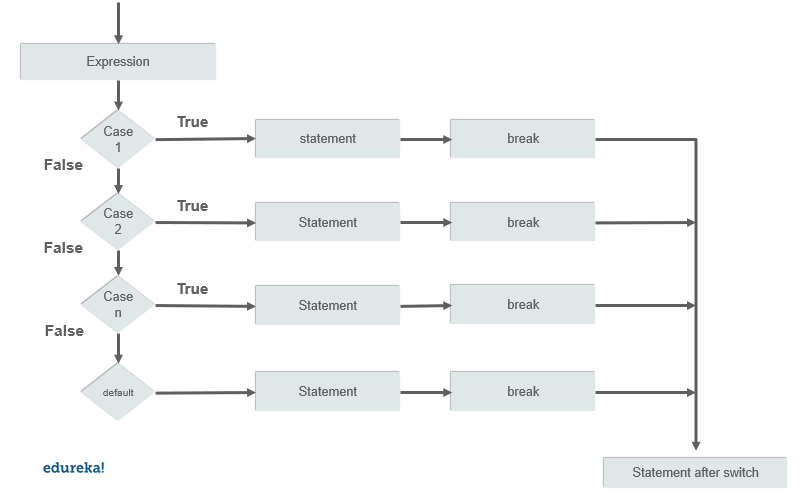


SwitchDemoFallThrough shows statements in a switch block that fall through. The Java SE 17 release introduces pattern matching for switch expressions and statements ( JEP 406) as a preview feature. The issue is that you used parenthesis in the case statements, if youll change case (VALUE1): to case VALUE1: etc it should work. Each case is followed by the value to be compared. There can be any number of case statements within a switch. The expression used in a switch statement must have an integral or character type, or be of a class type in which the class has a single conversion function to an integral or character type.

The break statements are necessary because without them, statements in switch blocks fall through: All statements after the matching case label are executed in sequence, regardless of the expression of subsequent case labels, until a break statement is encountered. Points to remember while using Switch Case. Control flow continues with the first statement following the switch block. Each break statement terminates the enclosing switch statement. There can be one or N number of case values. An if-then-else statement can test expressions based on ranges of values or conditions, whereas a switch statement tests expressions based only on a single integer, enumerated value, or String object.Īnother point of interest is the break statement. In other words, the switch statement tests the equality of a variable against multiple values. You could also display the name of the month with if-then-else statements:ĭeciding whether to use if-then-else statements or a switch statement is based on readability and the expression that the statement is testing. The switch statement evaluates its expression, then executes all statements that follow the matching case label. A statement in the switch block can be labeled with one or more case or default labels. The body of a switch statement is known as a switch block. In this case, August is printed to standard output.


 0 kommentar(er)
0 kommentar(er)
